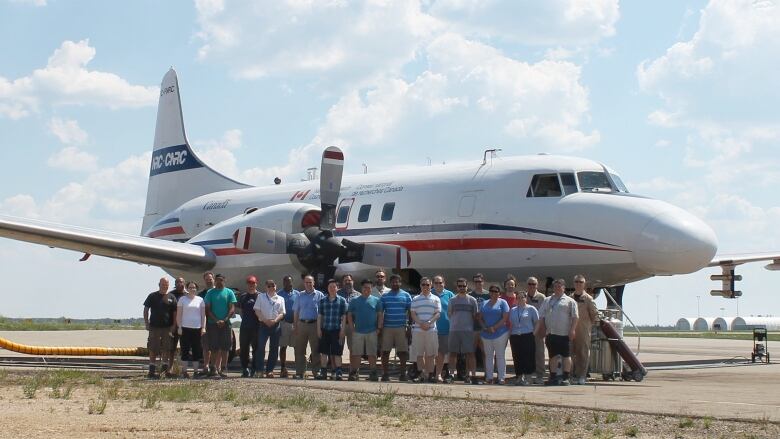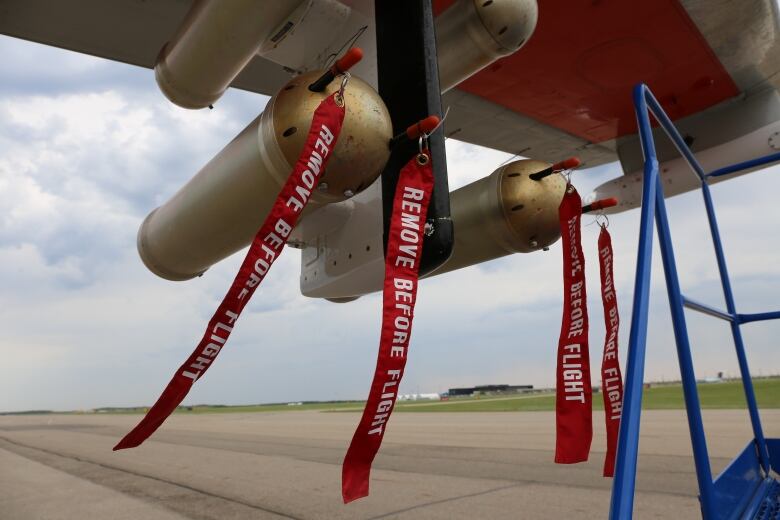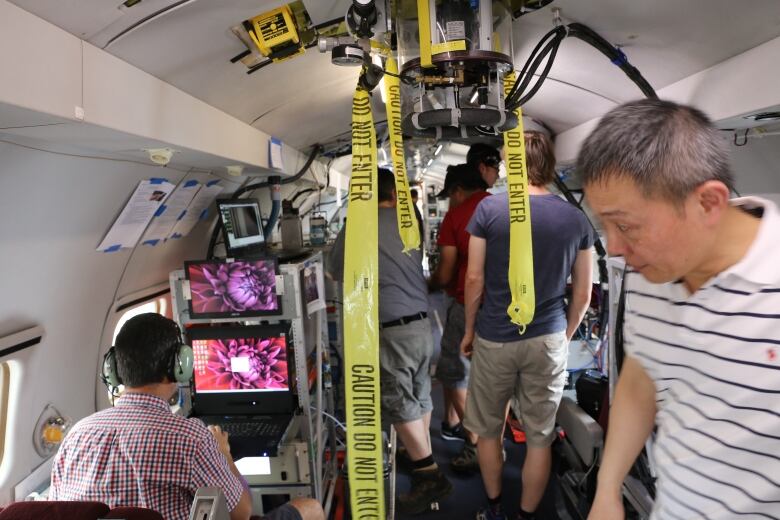Flying air-monitoring lab tests emissions in oilsands region
Aircraft is capable of testing atmosphere while flying thousands of feet in the air

A unique aircraft is in Fort McMurray this month to test the cocktail of pollutants emitted by oilsands facilities.
Shao-Meng Li isexcited talkingabout all the gadgets and gizmos on board the twin-propeller Convair580,a flying research lab.

"And ... it has enough range that it could fly in a time frame that's desirable."
The Convair 580, which belongs to theNational Research Council of Canada,has been modified with 25 air-quality-testing instruments in preparation for a series of flights this summerover oilsandsfacilities in theFort McMurrayarea.
The aircraft is "the most extensively instrumented aircraft in Canada for air quality studies," saidStewartCober, research manager with Environment and Climate Change Canada. It's one of only a few planes in the world that can test particles and gases in the air.

In 2013 the researchers did similar work and found levels of air pollutants from oilsands mines might be underestimated.
But there were gaps in theresearch and now the team is back to sample a larger area with more moderninstruments on board.
"We have newer technology to measure newer compounds that we weren't able to do in 2013," Li said.

Last time the teamtested forhydrocarbonssuch asmethaneand volatile organic compounds, which can be harmful to human health.
The earlierresearchwas restricted to areas such as mines and tailings ponds north of FortMcMurray.

- MORE FORTMcMURRAYNEWS: Teepee-raising protests forced removal of Indigenous families in Fort McMurray
- MORE FORTMcMURRAYNEWS:Audit reveals weaknesses in Wood Buffalo's contracting procedure
- MORE FORTMcMURRAYNEWS:'Smells like strong cat pee': Smartphone app tracks oilsands odour complaints
The data will be used to help understand the impact of emissions on the ecosystem and humansover the long term.
"The biggest impact of the research," Cober said,"is understanding where the plumes go and what the level of exposure is.
"Once we know that,we can understand the impactson the ecosystem and the impacts on human health."

Connect with David Thurton, CBC'sFort McMurraycorrespondent, onFacebook,Twitter,LinkedInor email him atdavid.thurton@cbc.ca












_(720p).jpg)


 OFFICIAL HD MUSIC VIDEO.jpg)
.jpg)



























































































